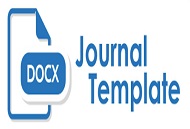Exploring the role of international rankings in the development of institutional public relations strategies
DOI:
https://doi.org/10.21831/informasi.v54i1.73114Keywords:
Public relations, Reputation, International rankings, QS, Times Higher EducationAbstract
The study uncovered that educational institutions cannot exclusively rely on their international ranking achievements to maintain their legitimacy. Universities must prioritize strategic communication to enhance their competitive position in the global education market. The study employed a mixed-methods approach, encompassing in-depth interviews and focus group discussions with a cohort of 37 first-year students attending a private institution. The study revealed that students' decision-making process in selecting a private university was intricate and involved multiple aspects. In addition to rankings, students also considered variables such as parental influence, networking possibilities, and the level of facilities and support services provided by the university. Consequently, colleges should prioritize not only their rankings but also other marketing tactics to recruit students. Although university rankings like QS and Times Higher Education significantly influence the perception of institutions in terms of quality and prestige, it is advisable to adopt a more balanced approach. Access to information via digital platforms, such as websites and social media, has played a critical role in demonstrating the program's and university's reliability. Public relations initiatives, however, have focused on highlighting the excellence of education and the societal obligations of universities in the fiercely competitive higher education sector.References
Achmad, W., Talib, W., & Basri, M. (2021). Multicultural education-based instruction for mental revolution in teaching Intercultural Communication: Indonesian university students' Perspectives. ELT Worldwide: Journal of English Language Teaching. https://doi.org/10.26858/eltww.v8i1.22299.
Amsler, S., & Bolsmann, C. (2012). University ranking as social exclusion. British Journal of Sociology of Education, 33, 283 - 301. https://doi.org/10.1080/01425692.2011.649835.
Aryani, F., & Umar, N. (2020). Factors Affecting Z Generation on Selecting Majors in The University: an Indonesian Case. Journal of Social Studies Education Research, 11, 109-133.
Balaji, M., Roy, S., & Sadeque, S. (2016). Antecedents and consequences of university brand identification. Journal of Business Research, 69, 3023-3032. https://doi.org/10.1016/J.JBUSRES.2016.01.017.
Barron, G. (2017). The Berlin Principles on Ranking Higher Education Institutions: limitations, legitimacy, and value conflict. Higher Education, 73, 317-333. https://doi.org/10.1007/S10734-016-0022-Z.
Basit, T. (2003). Manual or electronic? The role of coding in qualitative data analysis. Educational Research, 45, 143 - 154. https://doi.org/10.1080/0013188032000133548.
Braun, V., & Clarke, V. (2022, February). Conceptual and design thinking for thematic analysis. Qualitative Psychology, 9(1), 3–26. https://doi.org/10.1037/qup0000196
Bryman, A. (2006). Integrating quantitative and qualitative research: how is it done?. Qualitative Research, 6, 113 - 97. https://doi.org/10.1177/1468794106058877.
Casidy, R., & Wymer, W. (2016). Linking prestige perception with consumption experience, loyalty, and WOM. Marketing Intelligence & Planning, 34, 540-558. https://doi.org/10.1108/MIP-06-2015-0113.
Conard, M., & Conard, M. (2000). An Analysis of Academic Reputation as Perceived by Consumers of Higher Education. Journal of Marketing for Higher Education, 9, 69 - 80. https://doi.org/10.1300/J050v09n04_05.
Dewi, M., Tanjung, S., & Nadira, S. (2019). Optimization of Cyber PR at Private Universities in Yogyakarta. Asian Journal of Innovation and Entrepreneurship, 4, 125-129.
Emerson, R. (2017). Likert Scales. Journal of Visual Impairment & Blindness, 111, 488 - 488. https://doi.org/10.1177/0145482x1711100511.
Erkkilä, T. (2013). Introduction: University Rankings and European Higher Education. Global University Rankings, 3-19. https://doi.org/10.1057/9781137296870_1
Gunarto, M., Nugraha, D., & Gaffar, V. (2016). Analysis of Perception and Public Preference on Reputation of Higher-Education Ranking Agencies. , 364-370. https://doi.org/10.2991/GCBME-16.2016.65.
Harahap, D., & Amanah, D. (2019). Assessment in Choosing Higher Education: A Case of Indonesia. Journal of International Business, Economics and Entrepreneurship. https://doi.org/10.24191/jibe.v4i1.14413.
Khokhar, S., Pathan, H., Raheem, A., & Abbasi, A. (2020). Theory Development in Thematic Analysis: Procedure and Practice.3, 423-433. https://doi.org/10.47067/RAMSS.V3I3.79.
Kusumawati, A., Perera, N., & Yanamandram, V. (2019). Modelling trade-offs in students' choice set when determining universities. International Journal of Educational Management. https://doi.org/10.1108/IJEM-01-2018-0007.
Lee, Y., Wanta, W., & Lee, H. (2015). Resource-Based Public Relations Efforts for University Reputation from an Agenda-Building and Agenda-Setting Perspective. Corporate Reputation Review, 18, 195-209. https://doi.org/10.1057/CRR.2015.6.
Logli, C. (2016). The Palgrave Handbook of Asia Pacific Higher Education (p. 561–581). Palgrave Macmillan. https://doi.org/10.1057/978-1-137-48739-1_37
Maady, M., Yuwita, P., Ardianti, A., Anggraini, F., & Lestari, I. (2019). Exploring Open Government Partnership as a Strategy for Promoting Transparency in Private University: An Initial Study. Proceedings of the 5th UPI International Conference on Technical and Vocational Education and Training (ICTVET 2018). https://doi.org/10.2991/ICTVET-18.2019.13.
Marginson, S. (2007). Global University Rankings: Implications in general and for Australia. Journal of Higher Education Policy and Management, 29, 131 - 142. https://doi.org/10.1080/13600800701351660.
Ordorika, I., & Lloyd, M. (2015). International rankings and the contest for university hegemony. Journal of Education Policy, 30, 385 - 405. https://doi.org/10.1080/02680939.2014.979247.
Peppercorn, J., Buss, W., Fost, N., & Godley, P. (2008). The dilemma of data-safety monitoring: provision of significant new data to research participants. The Lancet, 371, 527-529. https://doi.org/10.1016/S0140-6736(08)60239-1.
Platz, S., & Holtbrí¼gge, D. (2016). Student Expectations and Experiences in Higher Education: A Comparison of State and Private Universities in Germany. , 171-190. https://doi.org/10.1057/978-1-137-54291-5_8.
Richards, K., & Hemphill, M. (2017). A Practical Guide to Collaborative Qualitative Data Analysis. Journal of Teaching in Physical Education, 37, 225-231. https://doi.org/10.1123/JTPE.2017-0084.
Ronald, R., & Emmerich, S. (2022). Strategi Meningkatkan Participate Interest Mahasiswa terhadap Program Merdeka Belajar Kampus Merdeka. Jurnal Nusantara Aplikasi Manajemen Bisnis. https://doi.org/10.29407/nusamba.v7i2.17026.
Safón, V. (2013). What do global university rankings measure? The search for the X factor and the X entity. Scientometrics, 97, 223–244. https://doi.org/10.1007/s11192-013-0986-8
Smith, M. (2010). Ethics and Research Governance, 41-58. https://doi.org/10.4135/9781446268346.N4.
Su, B., Hu, J., Chen, W., Shen, W., & Lin, C. (2005). Factors Affecting Medical Students' Choice of Residency: A Preliminary Study. Mid-Taiwan Journal of Medicine, 10, 181-188. https://doi.org/10.6558/MTJM.2005.10(4).3.
Thomas, S., Chie, Q., Abraham, M., Raj, S., & Beh, L. (2014). A Qualitative Review of Literature on Peer Review of Teaching in Higher Education. Review of Educational Research, 84, 112 - 159. https://doi.org/10.3102/0034654313499617.
Vaughn, P., & Turner, C. (2016). Decoding via Coding: Analyzing Qualitative Text Data Through Thematic Coding and Survey Methodologies. Journal of Library Administration, 56, 41 - 51. https://doi.org/10.1080/01930826.2015.1105035.
Walliman, N. (2017). Collecting Primary Data. In Research Methods: The Basics (2nd ed., p. 26). Taylor & Francis Group . https://doi.org/10.4324/9781315529011
Welch, A. (2007). Blurred Vision?: Public and Private Higher Education in Indonesia. Higher Education, 54, 665-687. https://doi.org/10.1007/S10734-006-9017-5.
Weston, C., Gandell, T., Beauchamp, J., McAlpine, L., Wiseman, C., & Beauchamp, C. (2001). Analyzing Interview Data: The Development and Evolution of a Coding System. Qualitative Sociology, 24, 381-400. https://doi.org/10.1023/A:1010690908200.
Wijaya, L. (2015). Public Relations in Private Universities in Central Java: Creating Innovation to Attract Students' Interest, 5, 46-51. https://doi.org/10.9744/SCRIPTURA.5.2.46-51.
Woolley, C. (2009). Meeting the Mixed Methods Challenge of Integration in a Sociological Study of Structure and Agency. Journal of Mixed Methods Research, 3, 25 - 7. https://doi.org/10.1177/1558689808325774.
Yahya, A., & Amalia, R. (2016). Pengaruh Sistem Kerja Terhadap Kinerja Perguruan Tinggi dan Implikasinya Terhadap Kepercayaan Mahasiswa Universitas Syiah Kuala Banda Aceh, 10. https://doi.org/10.13170/JP.10.1.3020.
Downloads
Published
Issue
Section
License
Authors who publish with this journal agree to the following terms:- Authors retain copyright and grant the journal right of first publication with the work simultaneously licensed under a Creative Commons Attribution License that allows others to share the work with an acknowledgement of the work's authorship and initial publication in this journal.
- Authors are able to enter into separate, additional contractual arrangements for the non-exclusive distribution of the journal's published version of the work (e.g., post it to an institutional repository or publish it in a book), with an acknowledgement of its initial publication in this journal.
- Authors are permitted and encouraged to post their work online (e.g., in institutional repositories or on their website) prior to and during the submission process, as it can lead to productive exchanges, as well as earlier and greater citation of published work (See The Effect of Open Access).




















